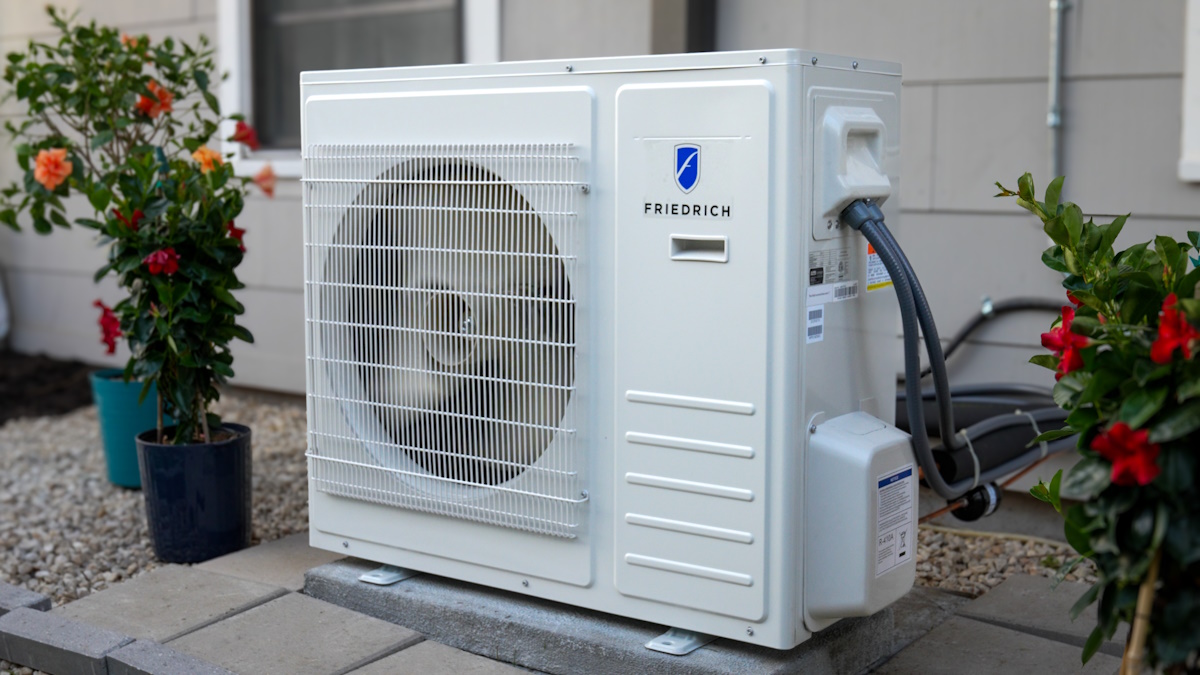✕
Increased revenue streams. A competitive advantage over other shops. Season stability. Upselling and bundling opportunities. Meeting demand for a growing market.
These may seem like a string of buzzwords some business influencer may throw at social media audiences, but they are also the potential outcome if an HVAC contractor elects to expand the services they are currently offering.
While there are many niches to choose from, one hot market that offers a nearly seamless integration is smart products.
Whether it’s enhanced energy efficiency, peace-of-mind security, or just fancy lighting, the rapid evolution of technologies in the smart home market over the last several years is providing property owners with hundreds of options that increase control and convenience, right at their fingertips.
Smart thermostats, video doorbells, and other things like AI-powered sensors tie in perfectly with the trends the HVAC industry is seeing in decarbonization and sustainability, making this an opportune time for contractors to add smart products to their offerings.
Trending Products
First-time homebuyers are a smart target for smart products, as they are interested not only in video doorbells and smart cameras, but also in having a more efficient method of expending energy.
“There has also been a noticeable increase in smart thermostat adoption year-over-year across the industry, which is largely driven by rising electricity costs and consumers’ growing focus on managing their spending, coupled with more partnerships with energy providers and utilities,” said Adam Welton, senior director, channel marketing, ecobee.
And, with more areas of the country experiencing colder-than-usual weather events, there is a growing demand for smart home solutions that are reliably efficient and operational in extreme conditions.
“Similar to priority initiatives within the HVAC industry, major smart home trends revolve around energy savings and decarbonization,” said TJ Wheeler, senior director of Friedrich Air Conditioning. “As these trends are directly intertwined, Friedrich takes strategic steps in combining technology like inverters and lower ambient heat pump operation into smart home products, like the Breeze Universal Heat Pump, to meet the evolving needs of consumers, contractors, and the industry as a whole.”

INTEGRATING FEATURES: Combining technology like inverters and lower ambient heat pump operation into smart home products can help meet the evolving needs of consumers. (Courtesy of Friedrich)
Products including heat pump and inverter technology are currently in high demand among consumers, as well as remain industry focuses as smart home solutions are being embraced as the future.
Over at Google Nest, they are anticipating AI and machine learning to change the industry and transform it from a collection of connected devices to an intelligent, responsive, and proactive environment and solution.
They’re also forecasting a continued appetite to monitor and manage home energy consumption via smart breaker panels, smart appliances, solar integrations, and so on, with increased integration across health and wellness platforms and features such as sleep and physical activity tracking, air quality monitoring, lighting controls (i.e., circadian rhythms) to be in the forefront, as well.
A Word on Integration
Is the price tag of a new smart product worth it to the consumer if it means they have to make major modifications to their existing systems? Probably not. Luckily, manufacturers have expended a lot of time and capital to ensure the process doesn’t require an advanced degree in computer science to integrate new technology into older equipment.
For many manufacturers, like ecobee, compatibility and interoperability are top priorities, so their new smart thermostats use the same wires and systems as conventional ones to make it easy on contractors who do make the extra sale.
“They’re compatible with ~95% of 24 VAC HVAC systems in North America and integrate with the most popular smart home platforms,” Welton said. “We also recognize that some homeowners may have proprietary HVAC communicating controls. In those cases, our Pro-specific customer support team partners with contractors to explore the best solutions. Plus, ecobee makes expanding a smart home simple — once our thermostat is installed, adding additional ecobee products is seamless for a connected, intuitive experience.”
Even when working with newer technologies, like heat pumps, Serge Lombardi, strategic partnerships lead at Google Nest, said integration shouldn’t be much of an issue.
“The Nest thermostat line has been thoughtfully designed to work with the vast majority of residential HVAC systems, including unitary systems, ductless, and heat pumps,” Lombardi said. “The Nest Learning Thermostat (4th gen) is our most compatible product ever and can support advanced HVAC systems that feature ERVs, humidity controls, and more.”
Eric Roland, a board member of CGNA, said connecting the dots between all the different products and protocols can be a challenge, but there are tools to help.
“Using a setup like the open source project Home Assistant to integrate helps ease the burden and using MQTT effectively would be a challenge until you are more experienced doing it,” Roland said. “Understanding basic network and IoT, how it can tax a home network, etc. can resolve a lot of headaches. Additionally, pre-design your dashboards and know them thoroughly.”
Getting Skin in the Game
To actually get the ball rolling, a great place to start is with the manufacturers themselves, as most offer resources designed to aid contractors with sales information and how-tos.
“Our goal is to make sure contractors are well-versed in the ecosystem but are equipped with the right information to surface to the homeowner,” Welton said. “This includes in-person and virtual training, along with a complimentary smart thermostat for qualified contractors so they can experience the many benefits of ecobee products firsthand.”
Lombardi shared the same message: Training and education are at the core of any successful initiative.
“(The) Google Nest Pro team invests continually in our partners through training programs to support both wholesale distributors, installation techs, and sales associates,” Lombardi said.
Roland also suggests doing plenty of homework and bench testing before taking on a line, or path of work, with smart home products.
“Partner with a manufacturer if you want to put all your eggs in one basket,” Roland said. “It will probably take a few jobs to get it just right, but then it will get easier with repetition. Get creative and think outside the box on your offerings, and standardize the components you use. Understand or learn basic home networking and IoT techniques.”

ALL IN ONE PLACE: Customers are starting to expect more control over their HVAC systems, and the addition of a smart thermostat is a great place to start. (Courtesy of Getty Images / andresr)
Wheeler said technicians should be prepared to offer smart home solutions that commonly align with consumer needs, including smart thermostats and smart air conditioning units for proper climate control.
Homeowner FAQs
With constant news of data breaches and institutional hacks, consumers may rightly be weary of adding this type of connectivity in their homes.
To ease their concerns, technicians need to be prepared to answer those types of questions beforehand, and this is best done by ensuring they know company- and device-specific policies before making a sale.
“Data privacy is also an area that we take very seriously. We only gather data when necessary to deliver our services, like system upgrades, and never sell personal information,” Welton said. “Ultimately, customers have complete control over their data with ecobee. They also can voluntarily participate in Donate Your Data, a program where anonymized thermostat data is shared with researchers to help for us to share with researchers to help learn how to build more energy-efficient housing, mitigate severe weather, help disadvantaged communities, and to influence public health policy.”
Aside from privacy concerns, the average American already has multiple apps on their phones for every facet of life and, with such a broad and versatile market filled with more options than can be counted, smart product fatigue is real.
This fatigue can be mitigated by focusing the transition to smart-enabled home features on seamless, integrated experiences.
Smart home products can also be commonly associated with costly upgrades, long-winded installations, and increased maintenance.
“However, consumer benefits directly revolve around energy efficiency (leading to monetary savings), convenience, and enhanced comfort,” Wheeler said. “Friedrich’s smart a/c units alone can help reduce energy consumption through precise temperature control and scheduling, contributing to lower energy bills and a more environmentally friendly home and user experience.”
Pricing Strategies
With products selected and technicians up-to-speed, the next step is considering how to price this new addition to an HVAC business.
Welton suggests pricing bundlings that take into account both the hardware and installation cost, along with a potential service plan.
“Contractors who factor in all three aspects will recognize a much higher margin without competing head-to-head on hardware alone. In addition to pricing strategies, it is also important to think about other areas where they can add value, including customer service,” Welton said.
Lombardi recommends value-based bundling and a focus on solution selling.
“Smart thermostats are a small but important part of the HVAC solution, and can be the gateway to broader smart home solutions that include doorbells, displays, and cameras,” Lombardi said. “Focus on the total solution and the platform: what problems are we solving for, what conveniences are we adding, what is the demonstrable value to the end user. Highlight energy savings, improved comfort and convenience, and potential long-term cost reduction your solutions would yield. Keep in mind there’s no one-size-fits-all for consumers, so be flexible — and be creative, tailoring the solution for your customer and their individual needs.”
Whether you require installation, repair, or maintenance, our technicians will assist you with top-quality service at any time of the day or night. Take comfort in knowing your indoor air quality is the best it can be with MOE heating & cooling services Ontario's solution for heating, air conditioning, and ventilation that’s cooler than the rest.
Contact us to schedule a visit. Our qualified team of technicians, are always ready to help you and guide you for heating and cooling issues. Weather you want to replace an old furnace or install a brand new air conditioner, we are here to help you. Our main office is at Kitchener but we can service most of Ontario's cities
Source link

